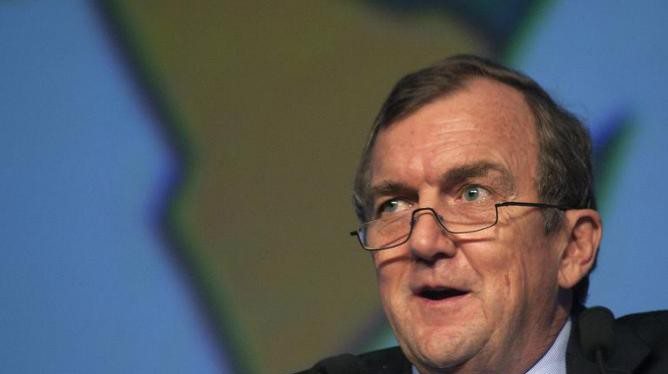
RANDGOLD Resources lifted the annual dividend 10% and said it would stand by its progressive dividend policy whilst stress in the gold industry would only improve its organic and exploration driven business case.
Writing in the UK-listed group’s annual report published today, Randgold Resources CEO, Mark Bristow, added that addressing an increase in industry-wide net debt to $47bn from $1bn in about 10 years would mop up the economic benefits of a significant improvement in the gold price.
There would be little left for exploration budgets which had plummeted in the sector, said Bristow. “The issue of paper in pursuit of growth has reduced gold production per share by more than 50%, and the lack of investment in exploration means that the industry has not been able to replace ounces mined since 2000,” he said.
“Consequently it faces a situation where even a significant rise in the gold price and an injection of fresh investment will at best enable it to clear its debt, but will provide little scope for adding any value or reversing the production decline,” he said.
“What is required are new discoveries, and that needs skills and investment in exploration and development – in other words, the application of Randgold’s founding strategy”. Randgold said gold reserves and resources were unchanged year-on-year which were predicated on a gold price of $1,000/oz. Gold is currently trading at $1,234/oz.
Bristow said Côte d’Ivoire remained the jurisdiction where the company’s best exploration targets lay including the Gbongogo target which consists of a 400 metre strike more than 100 metres wide. The grade of the prospect was between 1.5 and 2.0g/t at surface.
“It is rather reminiscent of Morila in its early days,” he said of Gbongogo referencing one of Randgold’s most successful gold exploration discoveries in Mali. “We know there is a big system there, but we now need to determine its geometry.”
There was also the possibility of establishing a super-pit at Gounkoto in Mali where a feasibility study of an underground mine, increasing the reserve to one million ounces, was underway.
Randgold announced a $0.66 per share total dividend for 2015 despite lower earnings year-on-year. “We have had no impairments or write-downs, and have substantial cash resources,” said Bristow.
“Our exploration teams are not only replacing the ounces we deplete but are making significant progress in the hunt for our next big discovery,” he added. The company had targeted gold production of 1.2 to 1.4 million oz in 2016 and medium term cash resources of $500m despite the progressive dividend policy.
This was to provide “financing flexibility for future new mine developments and other growth opportunities,” said Randgold Resources CFO, Graham Shuttleworth.
Randgold earlier this year walked away from a potential joint venture with AngloGold Ashanti over its Obuasi gold mine in Ghana saying the operation did not meet its investment criteria.










